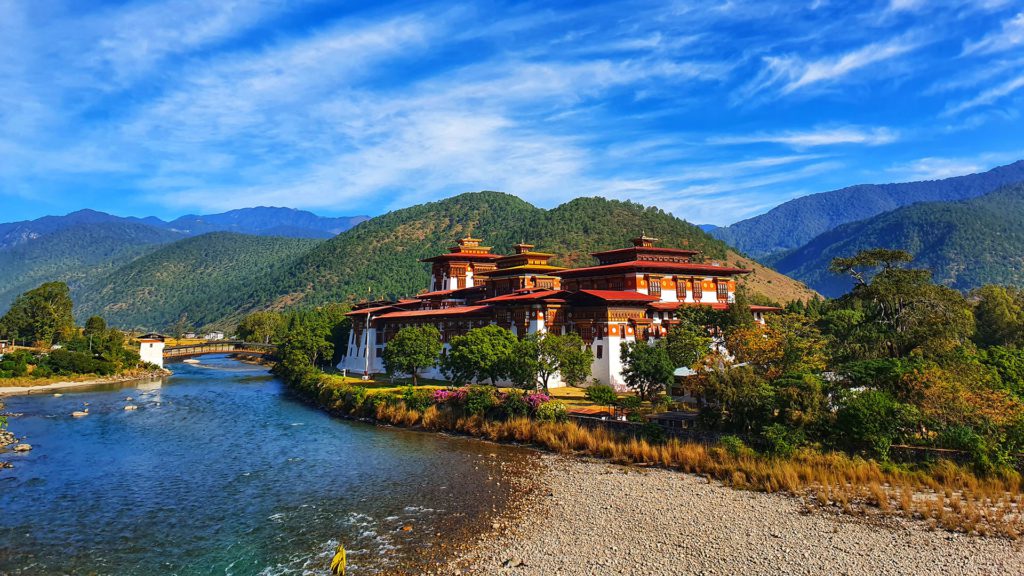|
Listen To Article
|
A journey through time, discover the hidden secrets of Bhutan. On 28th September 2022, the restored historical 250-mile pilgrimage trail traversing Bhutan will be officially re-opened for the first time in six decades. The Trans Bhutan Trail will be formally launched in a ceremony hosted by His Majesty The Fifth King and will take place within days of Bhutan’s borders fully re-opening to travellers on 23rd September.
This remarkable ecological and cultural conservation achievement has been made possible thanks to a collaborative effort between the Royal Government of Bhutan, the Tourism Council of Bhutan and the Bhutan Canada Foundation.
What is the Trans Bhutan Trail
The Trans Bhutan Trail is a network of ancient paths and trade routes that connect the high valleys and passes of eastern Bhutan with the lowlands of the west. First blazed in the 16th century by Tibetan pilgrims travelling to India, over time, it became an essential lifeline for both people and goods moving between Bhutan and the outside world.
The Trail, a unique piece of Bhutan’s cultural heritage, fell into disuse but has now been painstakingly restored and upgraded using traditional methods and materials. Eighteen major bridges, more than 10,000 steps and 250 miles of Trail have been built or restored over the last three years, converting this ancient pilgrim route into an outdoor adventure haven.
Looking onto Trongsa Dzong, Trans Bhutan Trail
Why is trekking so popular in Bhutan
The reopened Trans Bhutan Trail will give visitors an incredible insight into life in remote parts of Bhutan as they hike from east to west (or vice versa) through pristine forests, past alpine lakes, meadows and across high passes – experiencing first-hand the country’s unique culture, cuisine and hospitality along the way.
Hike, bike, raft and camp through the lush meadows and dense forests of nine dzongkhags (districts), 28 gewogs (local governments), two municipalities, parts of Phrumsengla National Park, and more than 400 historical sites, including museums and ancient fortresses, like Jakar Dzong and the Fortress of the White Bird.
This ancient trail runs from Haa in the west to Trashigang in the east, passing through Paro, Thimphu, Punakha, Wangi Phodrang, Trongsa, Bumthang and Mongar. All aspects of guided walking and biking on the Trail can be arranged directly via TBT on a not-for-profit basis.
Trans Bhutan Trail Map, Trans Bhutan Trail
Take time to learn about Buddhism while visiting important spiritual and cultural landmarks across the west and centre of Bhutan. Accommodations are available in a combination of simple guesthouses, homestays and tented camps, all located within walking distance of the Trail. In addition, travellers may choose to relax and rejuvenate at one of Bhutan’s luxurious resorts before heading home with memories (and photos) that will last a lifetime.
Buddha Dordenma Statue, Kuenselphodrang, Thimphu, Trans Bhutan Trail
Sustainability and environmentally friendly practices will be maintained throughout The Trail, ensuring consistency across other projects run by the Bhutanese tourism industry. In addition, the Trans Bhutan Trail is committed to enhancing the route out of respect for Bhutan’s ancestors and as a gift to future generations. The Trail is a member of the World Trails Network Sustainability Committee and was recently named in TIME’s World’s Greatest Places In 2022, an annual list of 50 extraordinary travel destinations.
Bridge in Katsho, Haa, Trans Bhutan Trail
Domkhar Palace, Bumthang, Trans Bhutan Trail
When can I hike in Bhutan
As the saying goes, there is a trek for every month of the year when in Bhutan.
The best time to trek in Bhutan is from mid-September to mid-December. This is the autumn season, with clear blue skies, the temperature at a comfortable mid-20 degrees during the day and just under 10 degrees at night, with fall leaves making for a colourful landscape. The autumn season is ideally suited to cover the high-altitude treks, such as the Bumthang trek in the north.
The lower altitude treks in central and southern Bhutan can be attempted during the spring season from March to May. Take in the foothills and valleys with flowers blooming across the countryside. ◼
Subscribe to the latest edition now by clicking here.
© This article was first published online in Aug 2022 – World Travel Magazine.
